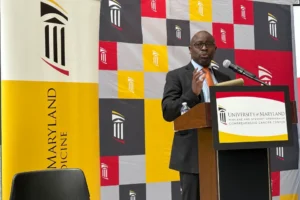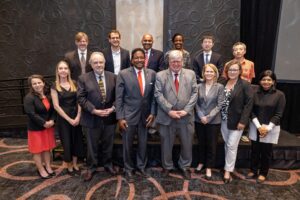Entrepreneurial culture boosts business
Published February 2, 2015 in The Baltimore Sun.
States with robust innovation economies have assets in common: a corps of research-intensive universities, a highly educated workforce and a government supportive of their science and technology industries. Maryland has all of these things. What the state needs to strengthen is its entrepreneurial culture, so that it becomes a top destination for scientists serious about ushering their ideas out of the lab and into the marketplace.
As Gov. Larry Hogan and the General Assembly make tough choices about how to invigorate Maryland’s economy, it’s imperative they focus on the state’s enormous innovative capacity and the institutions working to capitalize on it. Maryland’s research universities, supported by state investments, are key to building this culture of entrepreneurship.
Universities’ No. 1 job as an entrepreneurial engine is attracting to our institutions faculty who run cutting-edge research programs with high commercialization potential. The Maryland E-Nnovation Initiative, passed during the 2014 legislative session, will prove an essential recruiting tool, providing a state match of private dollars raised to support these faculty members.
The faculty return the investment several times over, bringing in multimillion-dollar grants and building out a research infrastructure — hiring staff, equipping labs — that fuels the innovation economy. Moreover, the initiative requires that faculty supported by E-Nnovation funds partner with other universities or with industry to bring their discoveries to market, amplifying the job-creating, economy-growing impact.
But luring entrepreneurial scientists to Maryland is only part of our role in stimulating economic growth; universities must also intensify the entrepreneurial activity of faculty already here.
UM Ventures connects the commercialization offices of two of Maryland’s most productive research universities: the University of Maryland, Baltimore (UMB) and the University of Maryland, College Park (UMCP), which together are responsible for $1 billion in research grants and contracts each year.
Faculty members with a proven track record in technology transfer work between the two universities, finding ideas with market potential and linking up the people who can further develop them. By expanding licensing staff, providing seed funding for promising ventures and aggressively marketing innovations to industry, the two universities last year increased the number of faculty inventions available for patenting to 366 (up 39 percent), executed 51 licenses on university technologies and launched eight startup companies.
One of UM Ventures’ success stories is Stevensville-based Harpoon Medical, now commercializing a device developed by a faculty member at the University of Maryland School of Medicine that enables minimally invasive heart surgery. In one year, the company licensed the technology from UMB, secured a patent on it and raised $3.6 million in early-stage financing.
By mapping out a shared innovation agenda, the state and its research universities can replicate and accelerate this success. We can give science and technology businesses better access to our world-class faculty, students and facilities, and allow our researchers to move more freely between academia and industry. We can establish a regulatory environment that’s responsive to the needs of Maryland’s businesses and their university collaborators. We can offer universities incentives to license their intellectual property to Maryland companies and offer companies incentives to locate or remain in Maryland.
And we can grow substantial technology clusters around the state. Entrepreneurs want to be side-by-side with each other, sharing what works and what doesn’t. They also want to be close to the universities and academic medical centers whose researchers and clinicians help them test and refine the science coming out of their labs.
The research parks affiliated with UMB, UMCP and the University of Maryland, Baltimore County are home to 200 tenants generating 6,000 Maryland jobs and $1.1 billion in mostly private capital investment. UMB’s growing BioPark already houses the largest cluster of biotechnology companies in Baltimore, and BioPark-located startups have secured $100 million from venture capital firms and pharmaceutical companies.
These parks are dynamic, creative communities with the capacity to more than double in size and create another 7,500 high-quality Maryland jobs.
The RISE Zone Program, offering tax credits to businesses locating near universities, is smart legislation passed last year that cultivates these communities. Additional incentives can expand these innovation districts, luring new researchers, inventors and risk-takers to Maryland, and establishing the entrepreneurial ethos shared by the country’s biggest startup states.
With the close collaboration of government, universities and industry — along with continued investment in the business of innovation — the state can grow its entrepreneurial economy and make Maryland the place where discovery pays.
Dr. Jay A. Perman is president of the University of Maryland, Baltimore. His email is jperman@umaryland.edu.



